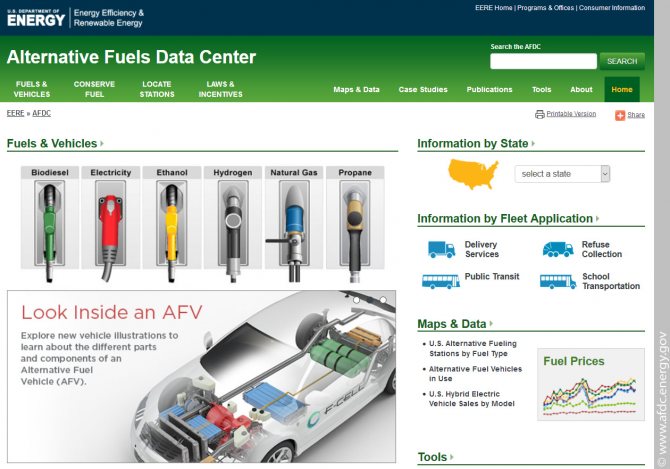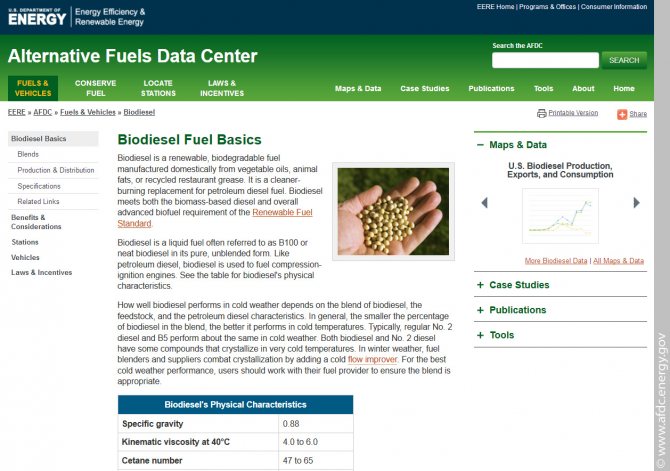In connection with the climatic shifts that are taking place on the planet, many countries are beginning to think about the environment. First of all, to improve the ecology of the planet, many countries produce biofuels that can replace the traditional one.
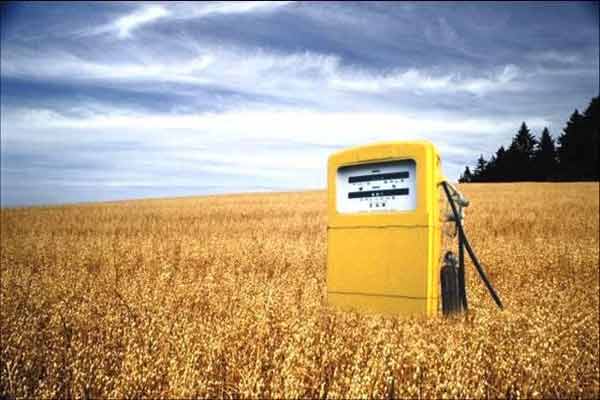
0.1. Environmentally friendly biofuels
Another reason for the production of biofuels is that the reserves of oil and coal are not endless. Sooner or later they will be exhausted, and when this happens, people will vitally need alternative fuels, which can be used by cars, boilers, turbines and so on.
What is biofuels?
The energy hidden in the plant mass is practically inexhaustible, because our sun serves as its source. Plants know how to use the energy of the sun, processing it for their growth. In turn, animals and birds receive energy by feeding on biomass, while producing waste products. By definition, biofuel is a fuel obtained from raw materials of plant or animal origin, as well as waste and various industries associated with the processing of biomass.
Modern technologies make it possible to obtain biofuels in three types: solid, liquid and gaseous. We meet solid fuel in life most often in the form of pellets and various briquettes obtained by pressing. Liquid fuel - biodiesel - is still a rarity in the post-Soviet countries, this is due to the presence of a large amount of fossil hydrocarbons at an affordable price. At the same time, it is quite expensive and technologically difficult to obtain liquid biofuel from vegetable oil.
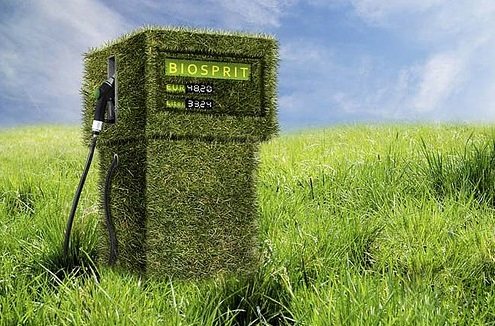

The production of combustible biogas is much easier and cheaper, as a result of which it is gaining more and more popularity. Owners of livestock and poultry farms are increasingly thinking about purchasing a biogas plant, because they have at their disposal a huge amount of droppings and manure, which are perfectly suited for this purpose.
It makes no sense to list here all types of plant raw materials for processing into fuel, its sources and production technology. We are only interested in those types of biofuels that can be successfully obtained at home without investing large sums of money. Here they are:
- biogas extracted from waste products of domestic animals and poultry;
- briquettes from various vegetable waste;
- charcoal.


Of course, if you try very hard, you can make your own pellets, eco-diesel, and even eco-gasoline. People do such things as a hobby, spending years of their lives and often a lot of money on it. For a wide range of users, such complex technologies are inaccessible, and therefore we will not consider them.
Biomethane production scheme
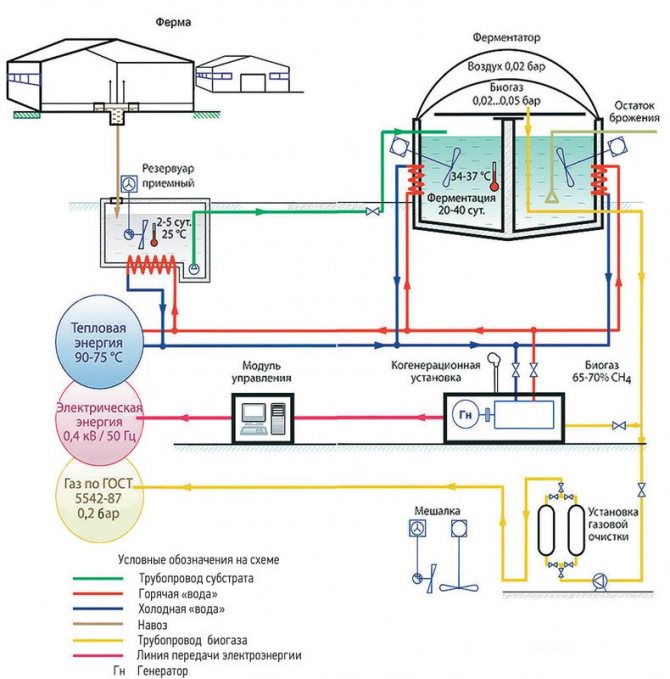

Biomass is also used to produce another vehicle gas - hydrogen. It is released by heating raw materials to high temperatures without oxygen, or, again, bacteria are called to work. Everything is used - from wood to algae. However, this gas is not yet particularly relevant for ordinary consumers. In the future, they want to use it as a fuel in fuel cells, which will appear in serial production (according to the most optimistic forecasts of the Daimler concern) not earlier than in five to seven years. And after the same amount - figures on the price tag adequate to income.
Biogas production at home
Combustible gas emitted from manure and other similar raw materials mainly consists of the same methane that we are used to using every day in our kitchen. The share of methane in biogas ranges from 50 to 70%, depending on the quality of raw materials and the efficiency of the technological process. The rest of the chemical compounds in the gas are non-combustible, they are carbon dioxide and hydrogen sulfide. It is thanks to the latter that the whole process is accompanied by a well-known smell.
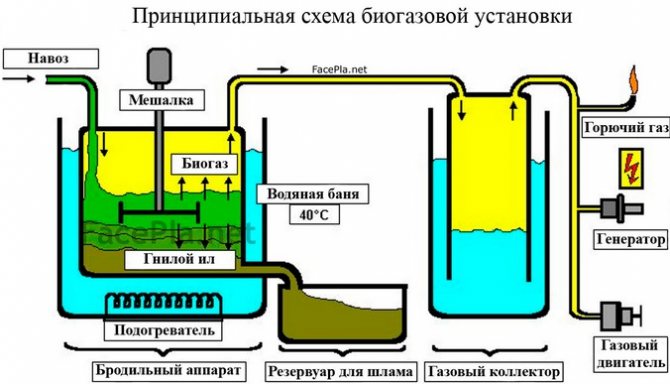

Gaseous biofuel is a combustible substance released as a result of the chemical reaction of fermentation of organic waste without the presence of oxygen. Therefore, the main element of technological equipment is a closed cylindrical vessel (reactor) of large capacity, preferably at least 1 m3.
Many home craftsmen use ordinary plastic or iron barrels for this purpose. This is quite acceptable, the reaction will also occur in such vessels. Only a little gas will be released, as a result it is disproportionate to the time and labor expended. The minimum capacity of the reactor must be at least 600 liters.
For the process to proceed as quickly and efficiently as possible, according to the technology, the contents of the reactor must be constantly heated to a temperature of 35-40 ºС. At home, this is not always possible, and it entails energy costs. The way out is as follows: it is better to install the container from which biofuel is obtained in a sufficiently deep hole made in the ground. Ideally, the bottom and walls of the pit are made of concrete, and the upper protruding part of the reactor is insulated for the winter. How this is done correctly is shown in the figure:
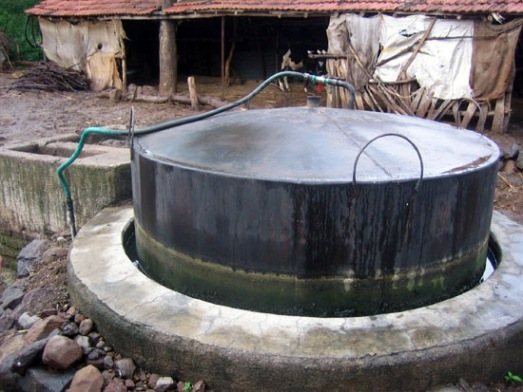

The general design of the installation, which allows the production of biofuel from manure, contains the following elements (see diagram below):
- reactor - a vessel made of cylindrical metal;
- loading hopper for filling the reactor with a substrate (a mixture of raw materials with water);
- service hatch;
- outer container - a water seal to maintain the required pressure in the reactor;
- pipe for unloading waste material;
- a branch pipe with a valve for biogas supply.
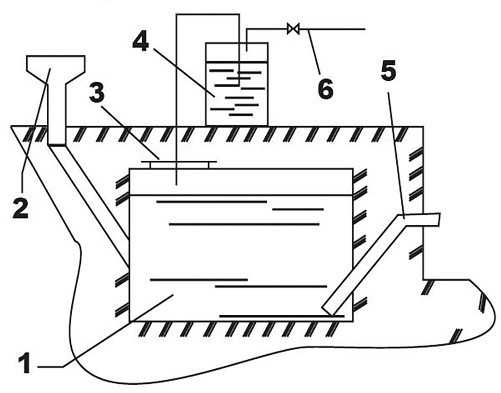

Note. To improve the fermentation of the substrate, it is recommended to add an auger to the structure, like a construction mixer. It is installed in the center of the tank, and a handle is brought out through the seal for periodic mixing of the contents.
The technological process is carried out as follows. First, the waste must be crushed. The size of the fraction should not exceed 10 mm, this will ensure good penetration of bacteria that cause fermentation. Then the raw material is poured with water and thoroughly mixed. The amount of water is approximately 0.7 liters for each kilogram of manure. It turns out a substrate, biofuel is extracted from it at home.
The substrate is filled into a container through a hopper, which is then hermetically sealed. The contents should be mixed whenever possible. After several days, flammable gas begins to evolve, it must be pumped out periodically so that the pressure inside the tank does not rise. This will slow down the reaction and force the contents back into the feed hopper. A compressor and a conventional propane cylinder are used to evacuate the gas. A detailed description of the installation and production technology can be studied by watching the video:
This is not to say that the separation of biogas from various types of manure and dung is a simple matter. Home craftsmen have to go through trial and error: either too little fuel is released, then the reaction does not go, and so on. It must be understood that success will require a lot of work and patience, and the amount of fuel is unlikely to be enough to heat a house. Nevertheless, it will be quite enough for the operation of the gas water heater and the stove, which is already a big plus.How these devices function on biogas is shown in the video:
Making briquettes
Setting up the production of biofuels from sawdust, straw and other waste at home is somewhat easier. Of the equipment, you only need a manual press made specifically for this purpose. It can be purchased ready-made, ordered by craftsmen, or, if you have the appropriate skills, you can make it yourself. A prefabricated press costs a lot of money, so the latter is the cheapest option.
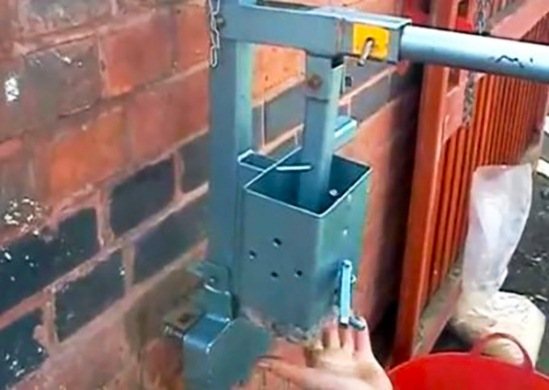

The production of briquettes begins with the preparation of the mixture. Sawdust, seed husks, straw and even soaked waste paper are used as raw materials. Of course, such fuel can already wonderfully burn in a furnace or solid fuel boiler, but due to the low bulk density, you will have to load the furnace too often. Finished solid biofuel made from straw or sawdust will burn much longer.
The mixture consists of raw materials, water and clay, which serves as a binder. Straw or paper must first be crushed, then mixed with clay in a ratio of 10: 1 (for 10 kg of waste 1 kg of clay) and water. The amount of water must be selected so as to ensure uniform mixing and the ability of the mixture to form. Do not add a lot of clay to the solution, do not forget that it will remain in your boiler in the form of ash.
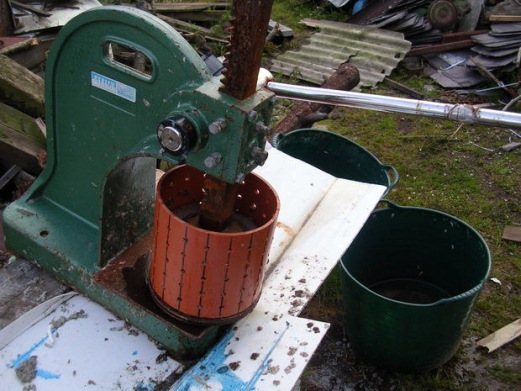

A special form is filled with the mixture, then it is placed under the press. After pressing, the finished briquette is carefully removed and laid out to dry in the sun. You can see the pressing operation in the video:
Environmental impact
Surprisingly, this type of fuel is absolutely harmless to nature and its release into the environment does not cause any negative consequences for flora and fauna. The same cannot be said about oil and petroleum products. It is a well-known fact that just one liter of gasoline or fuel pollutes at least a million liters of water in the world's oceans and leads to the death of many living organisms and microorganisms. One of the most important properties of biodiesel fuel is its rapid decay period: within one month, microorganisms will destroy almost the entire volume of fuel. Thus, if the river and sea modes of transport are converted to innovative fuels, then the harmful consequences of accidents and diesel leaks can be minimized.
Getting charcoal
Charcoal is of interest to homeowners as a fuel used in home barbecues and barbecues. It's no secret that buying such coal in a store is quite expensive, while at home you can burn it for free, only spending your time. By the way, it makes no sense to burn it in solid fuel boilers or stoves, it is much easier to put ordinary firewood in the firebox.
Charcoal is burned from wood in 2 ways:
- in barrels;
- in the pits.
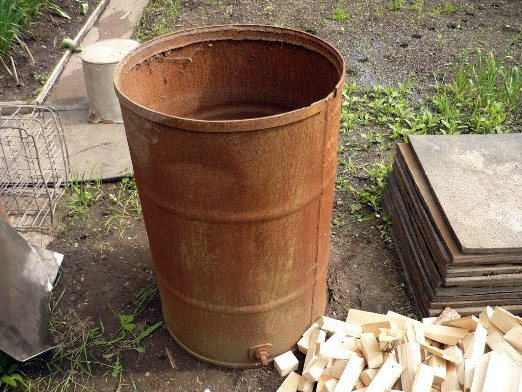

The first method requires an ordinary 200 liter steel barrel and a household vacuum cleaner. The latter will serve for air injection, therefore, a branch pipe must be cut into the bottom of the barrel to connect it. A fire is made at the bottom of the container, then it is filled with wood to half and the vacuum cleaner is turned on. Then the wood is applied to the top, covered with a lid and covered with clay. When everything burns out and the barrel cools down, sorting is performed in order to separate the charcoal from the ash.
Likewise, wood is fired in a pit. The latter is dug 0.8 m in diameter and no more than 0.6 m in depth. The bottom of the pit is tamped down, after which a fire is made in it and firewood up to 30 cm long is applied in layers. Filling occurs as the previous layer is burned, the process lasts about 3 hours. At the end, the pit is covered with branches and moss, and sprinkled with earth on top. After 2 days, the coating can be removed and the coals selected.
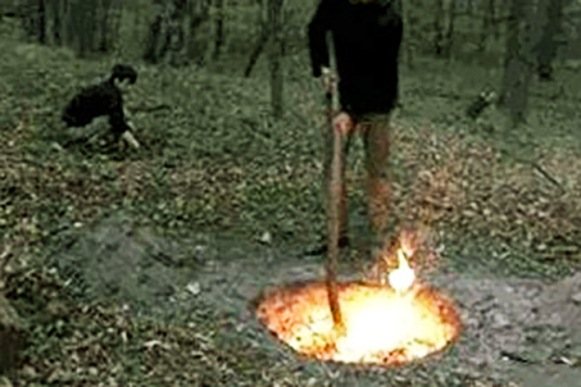

VEGETARIAN MENU
Diesel fuel is also prepared according to non-standard recipes. The raw materials are rapeseed, soybeans, various oils and fats.Such fuel is marked with the letter B and numbers corresponding to the proportion of plant components in the mixture. The cetane number of the fuel is higher than that of a conventional fuel: 51 versus 42–45. The fuel is highly biodegradable without harming the environment and contains practically no sulfur. Among the significant disadvantages is the short shelf life.
Bioadditives for diesel fuel have not yet received such widespread distribution as bioethanol. Nevertheless, it is produced in many countries. There are countries where the 5% bio content is legalized and does not need to be mentioned when sold.



